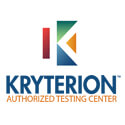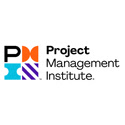Troubleshooting and Maintaining Cisco IP Networks (TSHOOT 300-135)
About This Course
Troubleshooting and Maintaining Cisco IP Networks (TSHOOT) certification training is a comprehensive training designed to train you to perform and plan regular maintenance checks on complex enterprise switched and routed networks. The course trains you to use technology and best practices and systematic approach for performing network troubleshooting. You also learn to use Cisco IOS troubleshooting and other specialized tools like Netflow, Syslog and Cisco IOS (EEM) Embedded Event Manager to help in your troubleshooting endeavors.
Troubleshooting and Maintaining Cisco IP Networks (TSHOOT) training helps you learn about tools and techniques used by networking experts and engineers for troubleshooting and maintaining complex switched and routed networks. The certification also helps you learn troubleshoot network connectivity problems, IPv6 assignment and connectivity issues, BGP (Border Gateway Protocol) routing, OSPF (Open Shortest Path First), EIGRP (Enhanced Interior Gateway Routing Protocol) faults.
Furthermore, you learn to work through DHCP (Dynamic Host Configuration Protocol) addressing problems, VLAN configuration and network security as well as other network issues. One of the core requisites of this certification course is the aptitude to explore and learn novel concepts whilst reinforcing your understanding through a broad range of well-integrated lab scenarios. With hands and on-lab training, the Troubleshooting and Maintaining Cisco IP Networks (TSHOOT) course takes you through various case studies helps you develop insightful troubleshooting expertise across diverse lab scenarios.
Who Should Attend This Course
Troubleshooting and Maintaining Cisco IP Networks (TSHOOT) is ideal for:
- Professionals preparing for 300-135 TSHOOT exam
- Network technicians and engineers
- Systems and support engineers
- Network analysts
- Senior network admins
- Anyone involved in the process of troubleshooting, identifying and implementing switched and routed enterprise networks.
Why This Course
Cisco is a global leader in networking. In fact, Cisco is the name behind the functioning of a vast number of service providers including federal agencies, corporations and educational organizations across the world. In fact, 85% of the Internet traffic of the world passes through Cisco systems, which increases the demand for Cisco certified personnel.
Further, the course lets you practice and learn techniques and tricks to troubleshoot and monitor switched and routed networks by providing you with extensive hands-on exercises. You explore a range of troubleshooting tools, procedures, approaches and methods. Most importantly, the hands-on lab exposure is designed to offer professionals with specific networking issues that arise in today’s switched and routed enterprise networks.
After completing the course successfully, you will learn to:
- Troubleshoot procedures, approaches and methods
- Execute recommended network maintenance
- Use specialized as well as basic troubleshooting tools
Most importantly, you will learn to troubleshoot:
- Redundant ISP or internet gateways that fail to offer backup
- Redistribution, BGP, EIGRP and OSPF issues
- GLBP, VRRP and HSRP issues
- EtherChannel issues
- Other problems including GRE, AAA, IP SLAs, default routes, DNS and NTP
- Internal device connectivity issues
- Network device connectivity issues
Course Objectives
Post successful completion of this course, you can:
- Plan and devise commonly executed maintenance exercises in complex enterprise networks
- Develop troubleshooting plan and process for identifying and resolving issues in complex networks
- Select troubleshooting tools and approaches that suit your enterprise network the best
- Practice and execute maintenance exercises in switching and routing -based enterprise environments and networks in secured infrastructure
- Maintain and troubleshoot complex, integrated enterprise networks
Course Prerequisites
Skills and knowledge required to enroll for this course are as follows:
- Implementing Cisco IP Switched Networks (SWITCH)
- Implementing Cisco IP Routing (ROUTE)
- In addition, one should have practical understanding and experience to install, operate and maintain Cisco switches and routers.
Course Benefits
After completing the course successfully, you will learn to:
- Troubleshoot procedures, approaches and methods
- Execute recommended network maintenance
- Use specialized as well as basic troubleshooting tools
Most importantly, you will learn to troubleshoot:
- Redundant ISP or internet gateways that fail to offer backup
- Redistribution, BGP, EIGRP and OSPF issues
- GLBP, VRRP and HSRP issues
- EtherChannel issues
- Other problems including GRE, AAA, IP SLAs, default routes, DNS and NTP
- Internal device connectivity issues
- Network device connectivity issues





























